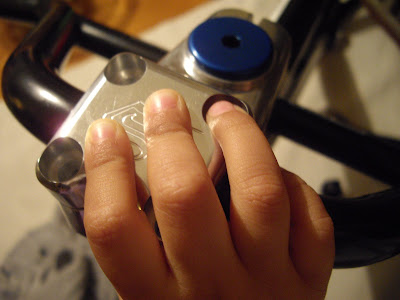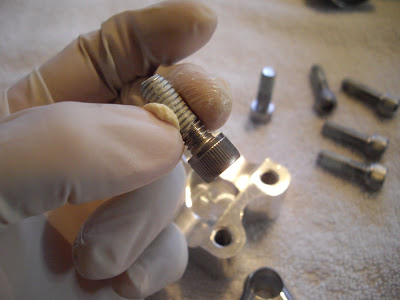
The headset is the interface between the front end of the bike and the tail end of the bike. A very important part that should be installed with the right tool each time. Taking a frame down to my local shop to have a headset pressed in once in a while really pays off, I can be assured the cups are pressed evenly and securely into the frame. In addition, the shop mechanics will be able to tell if the headtube must be milled to accept the cups. There are many ways to install the headset cups at home, hammer and a 2x4, washers with a big bolt and nut, rubber mallet and so on. All of those installation types cause damage, damage that you don't need and can't afford when it comes to safety. I took a headset to the shop today with a frame and fork. Headset in frame and bearing race on fork.
























